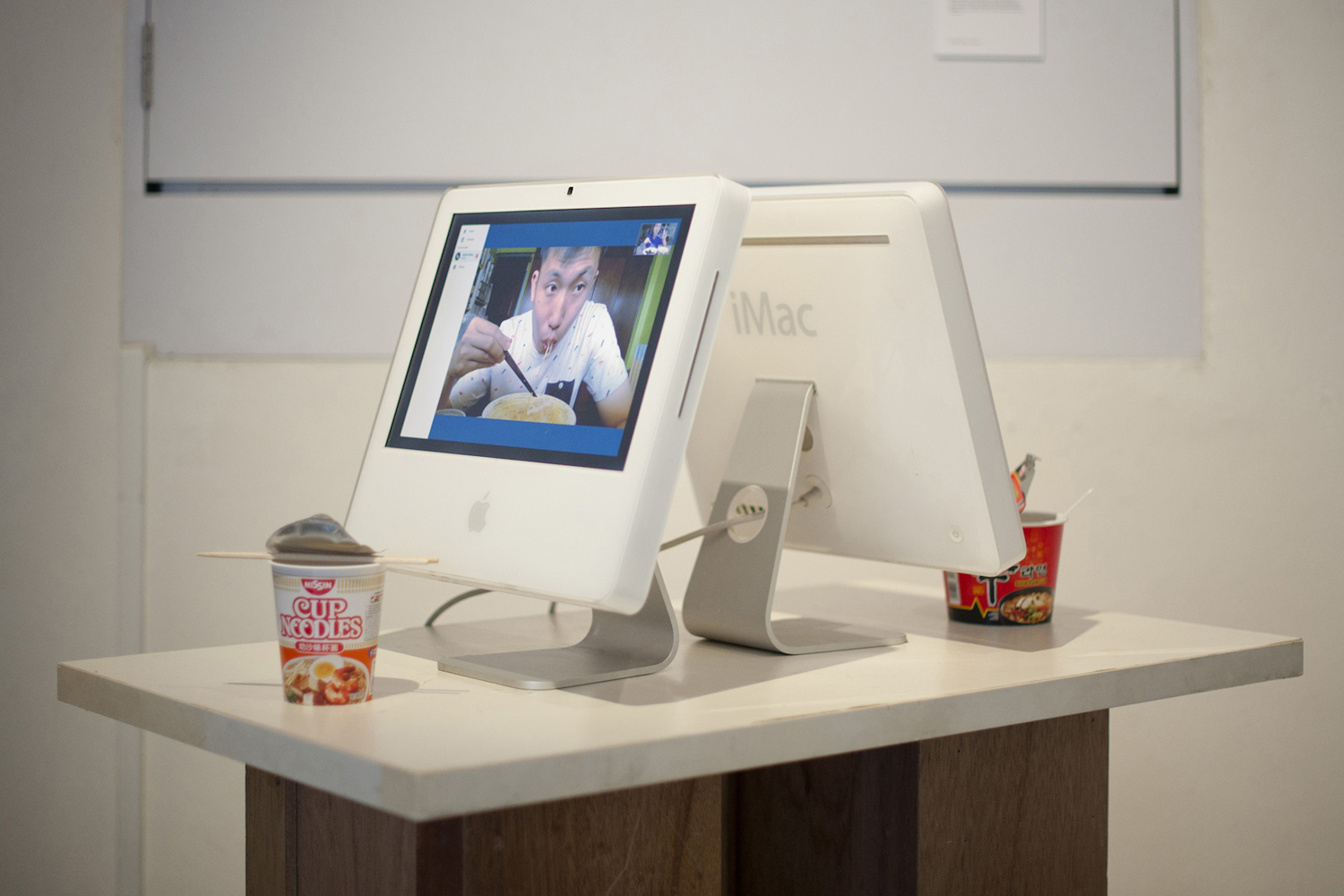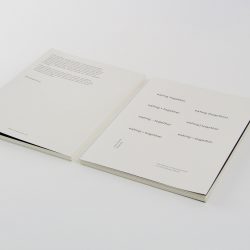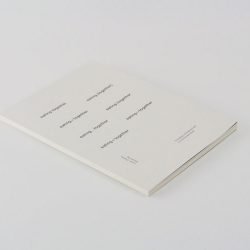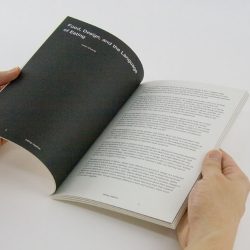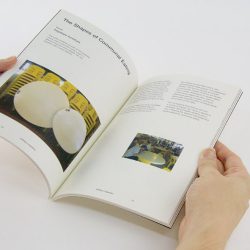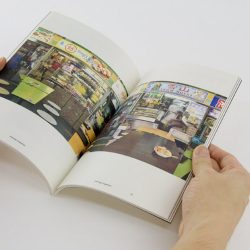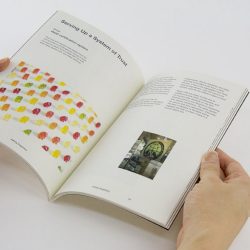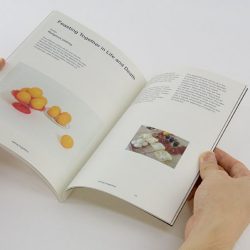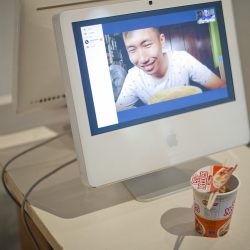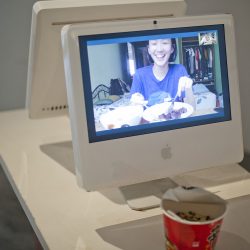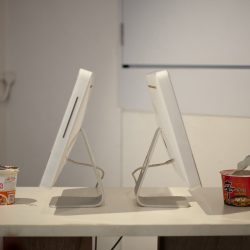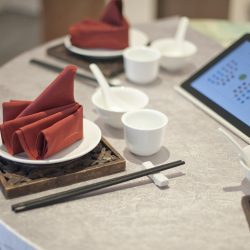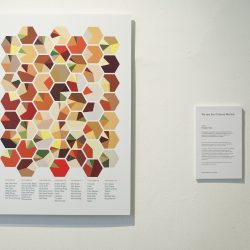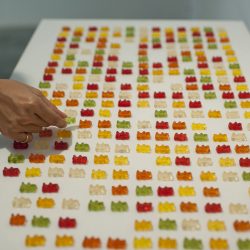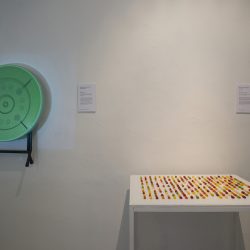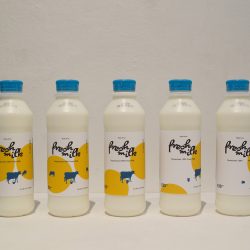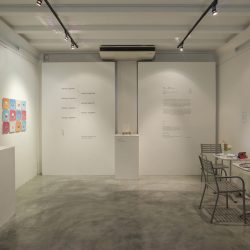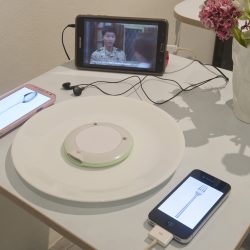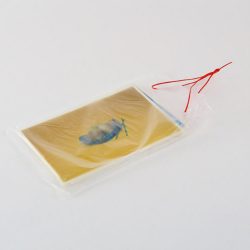FOR SG-BASED IN PLAIN WORDS, PERCEIVING FOOD AS A MEAL TO SHARE IS NEVER SOMETHING THAT HAPPENS BY CHANCE…
“To eat together conjures up images of people gathered together happily for a hearty meal, but sharing food is more than just that,” proposes Justin Zhuang of In Plain Words in reference to the Singapore-based writing studio’s recent exhibition ‘Eating Together, The Design of Sharing Food in a Connected World.’ “Just as punctuation makes a string of words a sentence, design turns food into a meal.”
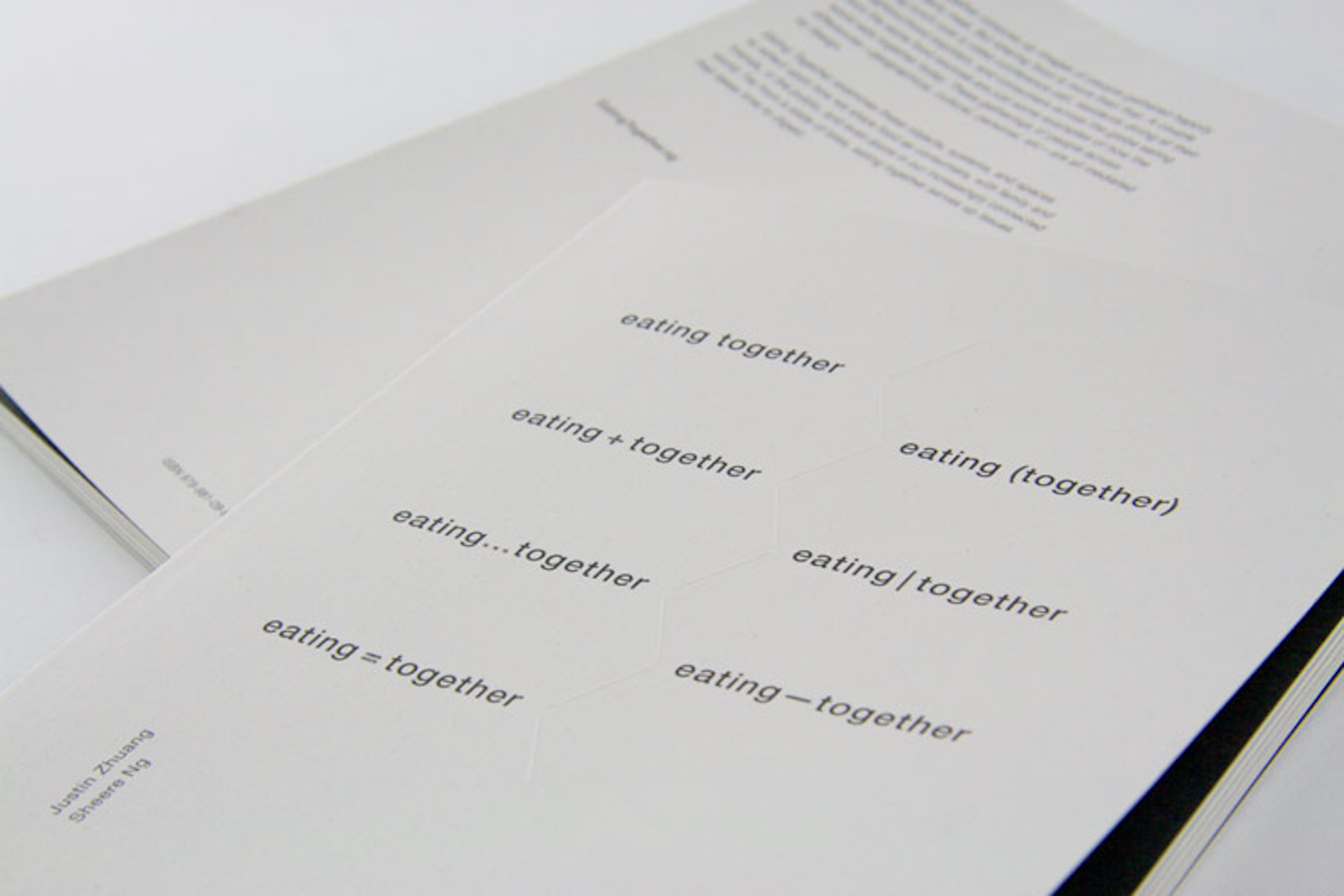
Exhibition Catalog, Image © Roots
The project reflects upon the many ways in which the world eats together today and how, even across cultural, geographical and personal differences, the element of design never fails to find its seat at the table. “Design is material culture that communicates particular intentions. Imagine a burger in a trash bag versus the same one on a plate, we think one is trash while the other is a meal,” furthered Zhuang. “Consisting of objects, systems, and spaces, design surrounds our food, mediating the relationships between people and their meals.”
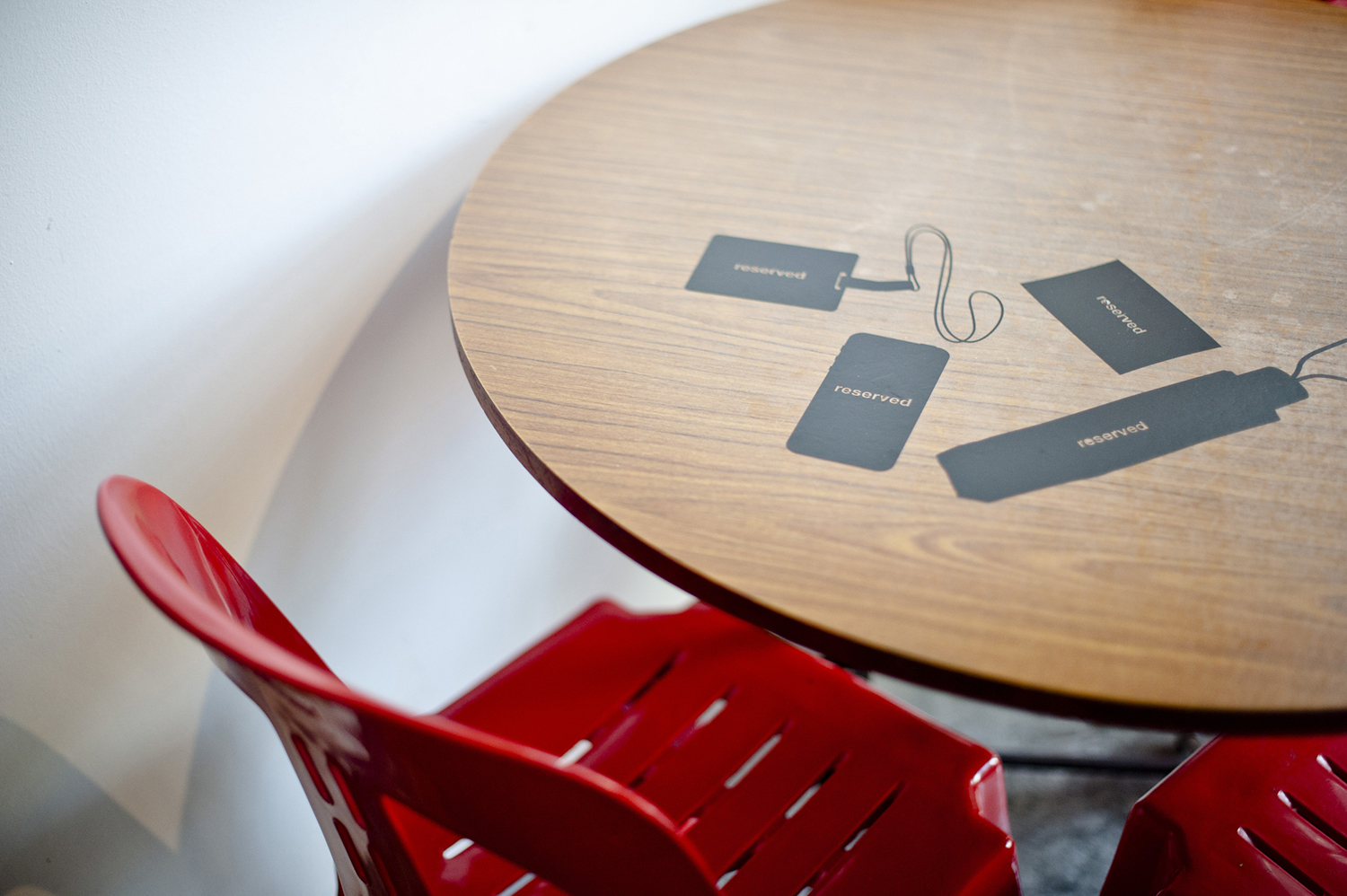
Eating Together Exhibition, Image © Clarence Aw
Some elements the exhibition looks at include ‘The Transparency of Taste,’ highlighting how the generic, nondescript takeaway containers often utilized by hawker stalls allow for taste alone to speak for the character of each stall, ‘Eating Out Like the Rest,’ which sheds light on the fact that, in Singapore where high-density shopping complexes are common go-to spots to grab a meal, the tendency to replicate formulas between one commercially successful shopping mall to the next leads to a homogenization of both goods and food – each mall serving up the same dining options wherever one may be and ‘Staying Apart in the Same Boat,’ examining how the ever-popular steamboat hotpot meal succeeds in allowing diners to contribute to a blend of tastes with their individual ingredient choices, while the perforated ladles also come into play in order to “set boundaries, and enable diners to eat together on their own terms.”
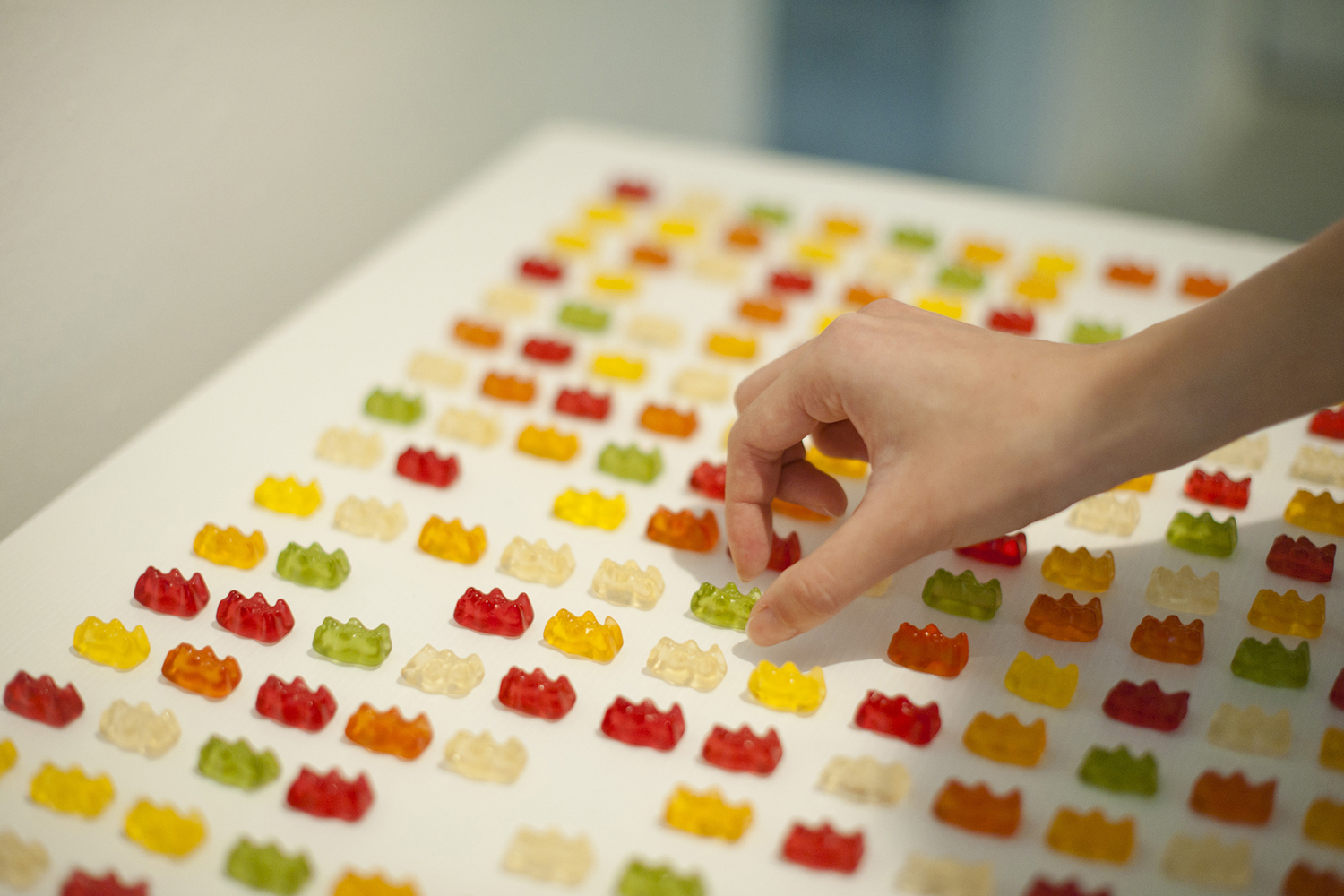
Eating Together Exhibition, Image © Clarence Aw
Even the different surfaces we eat upon are given greater role than that of platform, as tables themselves literally “shape” how we dine and with whom. Round tables and plastic chairs common to coffee joints are employed to maximize public seating capacity, inadvertently encouraging diners to eat together and “shaping the kopitiam into boisterous public spaces for communal eating,” while ‘Sharing Meals on the Table and Online’ mixes virtual technology in as ingredient, considering how sharing a meal over cyberspace pares the nature of eating together down to a particular essence – the requirement of having to describe one’s meal to others, or imagine what someone else’s meal tastes like, heightening the experience into an exchange beyond just food itself.”
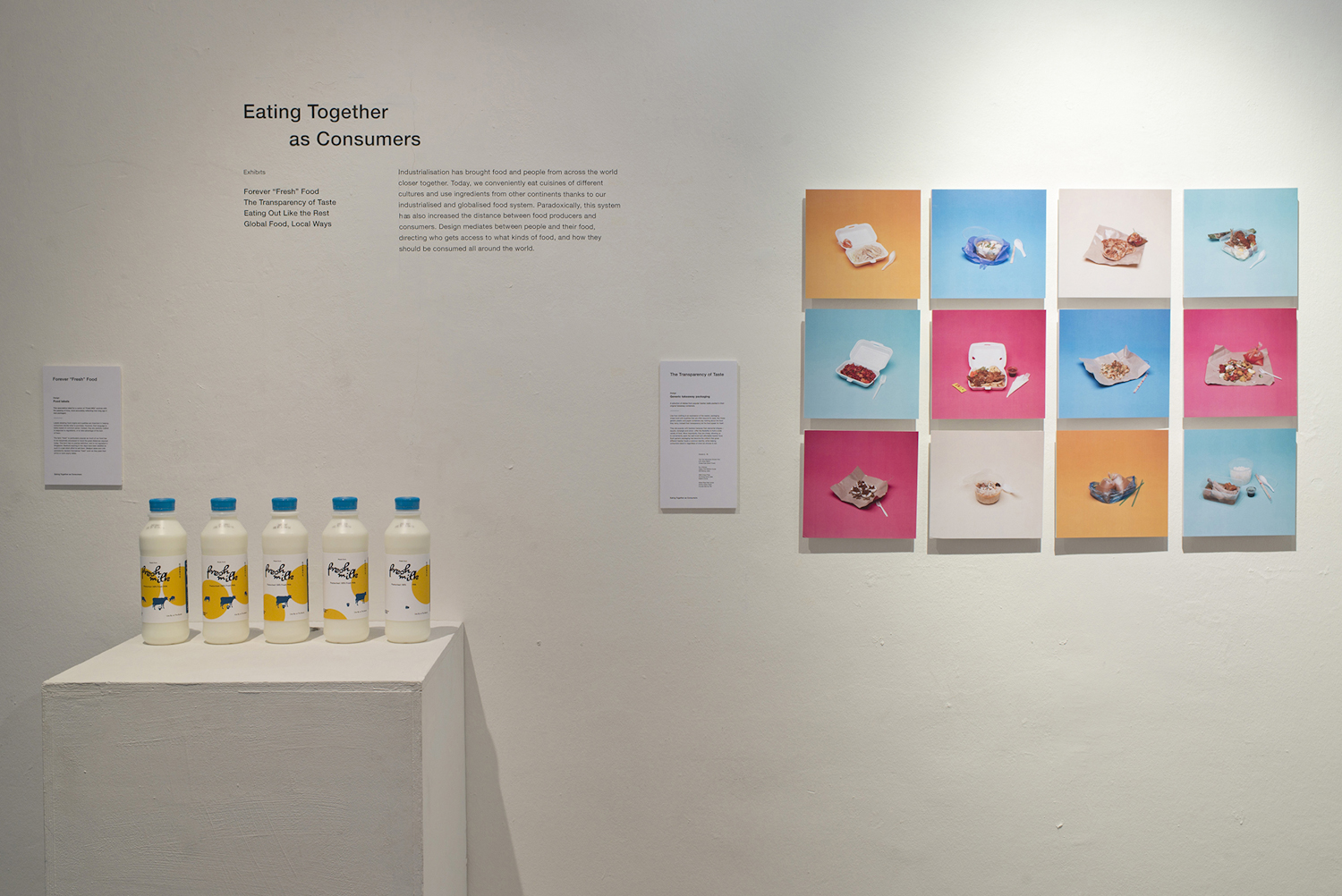
Eating Together Exhibition, Image © Clarence Aw
“Our observations came from our surroundings which are Singapore, but most of the subjects are applicable to other cities, although they may be expressed in different ways,” furthered Zhuang, “and while some of these habits of eating together indeed take root from typical Singaporean behaviors,’ for example, the “kiasu” (afraid to lose) nature of Singaporeans translating into the reservations of tables with tissue packets or other personal items even before the purchase of food, others can easily be found across other cities.” From city to city and across the tables of meals shared with family, friends, in public or even via virtual means, Eating Together outlines how, the experience of sharing a meal itself calls upon design as essential ingredient – flavoring our meals via object, system and space as the world eats together in countless ways.
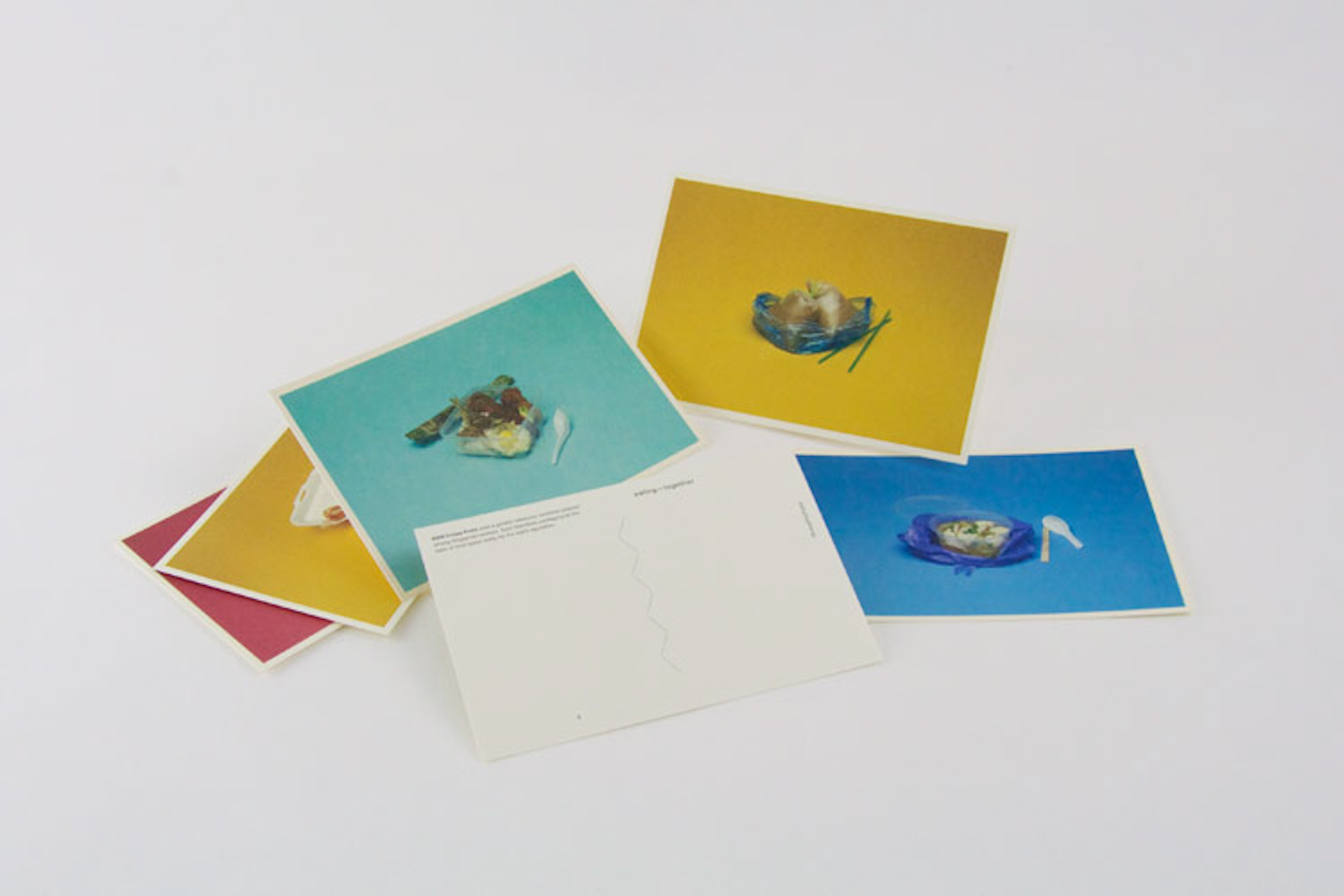
Exhibition postcards, Image © Roots
“การกินอาหารด้วยกันให้ภาพของผู้คนที่มารวมตัวกันเพื่อใช้เวลากับมื้ออาหารอย่างมีความสุข แต่การแบ่งปันอาหารเป็นอะไรมากกว่านั้น” Justin Zhuang แห่ง In Plain Words สตูดิโอการเขียนในสิงคโปร์กล่าว โดย Zhuang อ้างอิงไปถึงนิทรรศการล่าสุดของพวกเขาที่มีชื่อว่า ‘Eating Together, The Design of Sharing Food in a Connected World.’ “เหมือนกับการที่คำสันธานเชื่อมกลุ่มคำต่างๆ ให้เป็นประโยคการออกแบบก็ทำให้อาหารกลายเป็นมื้ออาหารขึ้นมา”
โปรเจ็คต์นี้สะท้อนหลากหลายรูปแบบและวิธีการที่ผู้คนบนโลกจะสามารถ “ร่วมโต๊ะอาหาร” ด้วยกันได้ แม้จะเป็นการกินของผู้คนจากต่างวัฒนธรรม ลักษณะทางกายภาพ และความเป็นปัจเจกบุคคลที่แตกต่าง องค์ประกอบของการออกแบบก็ไม่เคยพลาดที่จะหาที่นั่งให้กับตัวเองบนโต๊ะอาหาร “การออกแบบเป็นวัฒนธรรมทางวัตถุที่ใช้สื่อสารเจตนาใดเจตนาหนึ่ง ลองจินตนาการเบอร์เกอร์ในถังขยะกับอันที่วางอยูบนจานดูสิเรามองว่าอันหนึ่งเป็นขยะในขณะที่อีกอันเป็นมื้ออาหาร” Zhuang อธิบายเพิ่มเติม “ด้วยวัตถุ ระบบ และพื้นที่ต่างๆ การออกแบบอยู่ล้อมรอบอาหารที่เรากิน เป็นตัวกลางที่ดึงเอาความสัมพันธ์ระหว่างผู้คนและมื้ออาหารที่พวกเขากินมาไว้ด้วยกัน”
ประเด็นที่นิทรรศการนี้เข้าสำารวจตรวจตราก็เช่น “ความโปร่งใสของรสชาติ” ที่นำเสนอแง่มุมของกล่องใส่อาหารกลับบ้านแบบทั่วๆ ไปที่ไร้ซึ่งลักษณะพิเศษใดๆ ที่เหล่าร้านแผงลอยทั้งหลายชอบใช้ และการที่มันกลายเป็นสิ่งที่ทำให้รสชาติเป็นตัวบ่งบอกถึงคาแร็คเตอร์ของแต่ละร้านไปโดยปริยาย “Eating Out Like the Rest” อธิบายความเป็นจริงที่ว่า ห้างสรรพสินค้าที่คลาคล่ำไปด้วยผู้คนและร้านรวงในสิงคโปร์นั้น จัดเป็นพื้นที่ที่คนชอบไปหาอะไรกินมากที่สุด และแนวโน้มที่จะเลียนแบบสูตรสำเร็จของช็อปปิ้งมอลล์ต่างๆ จึงนำไปสู่ความคล้ายคลึงกันของสินค้าและอาหารที่วางขาย โดยแต่ละห้างก็ล้วนเสิร์ฟผู้บริโภคด้วยทางเลือกในการกินอาหารที่เหมือนๆ กันไปเสียหมด ‘Staying Apart in the Same Boat’ บอกเล่าถึงความนิยมของหม้อไฟ hot pot ที่ผู้กินสามารถเลือกรสชาติน้ำซุป รวมไปถึงการปรุงผสมผสานรสชาติด้วยวัตุดิบต่างๆ กันไปด้วยตัวเอง ในขณะที่ทัพพีแบบมีรูเข้ามามีบทบาทและช่วย “กำาหนดขอบเขต และช่วยให้ผู้กินสามารถร่วมมื้ออาหารกันได้บนความต้องการของตนเอง”
แม้แต่ความแตกต่างของพื้นผิวที่รองรับอาหารที่เรากินก็ยังได้รับมอบหมายบทบาทที่สำคัญ นั่นเพราะโต๊ะช่วยทำให้วิธีการที่เรากินอาหารและคนที่เรากินด้วยเป็นรูปเป็นร่างขึ้นมา โต๊ะกลมและเก้าอี้พลาสติกที่พบเห็นได้ทั่วไปในร้านกาแฟท้องถิ่นถูกนำามาใช้เพื่อเพิ่มความจุของพื้นที่ให้ได้มากที่สุดและส่งเสริมให้คนกินอาหารร่วมกันอย่างอ้อมๆ ก่อนจะค่อยๆ เปลี่ยนร้านกาแฟในชุมชนเหล่านี้ ให้เป็นพื้นที่สาธารณะอันคึกคักที่ทุกคนร่วมแบ่งปันประสบการณ์การกินร่วมกัน “ในขณะที่ ‘Sharing Meals on the Table and Online’ ผสมผสานเอาเทคโนโลยีเสมือนจริงในฐานะของหนึ่งในวัตถุดิบ โดยพิจารณาถึงการแชร์มื้ออาหารบนพื้นที่ในโลกไซเบอร์ที่ลดธรรมชาติของการร่วมกินอาหารลงเหลือเพียงสาระสำาคัญ นั่นคือความต้องการที่จะต้องอธิบายมื้ออาหารให้ผู้อื่นรับรู้ หรือจินตนาการว่ามื้ออาหารของคนอื่นรสชาติเป็นอย่างไรเน้นย้ำประสบการณ์ให้เป็นการแลกเปลี่ยนที่มากกว่าอาหาร”
“ข้อสังเกตต่างๆ ที่เรามองเห็นมาจากสิ่งที่อยู่รอบๆ ตัวเรา ซึ่งก็คือในสิงคโปร์ แต่หัวข้อส่วนใหญ่ก็เป็นสิ่งที่ประยุกต์เข้ากับเมืองอื่นๆ ได้เหมือนกัน เพียงแต่อาจจะแสดงออกในวิธีที่แตกต่างกันไป” Zhuang กล่าว “และในขณะที่กิจวัตรบางอย่างที่เราคุ้นชิน เช่น การกินอาหารร่วมกันนั้นมีรากฐานมาจากพฤติกรรมของคนสิงคโปร์ทั่วไป เช่น “การกลัวแพ้” หรือ ‘kiasu’ ที่ทำาให้เกิดพฤติกรรมการจองโต๊ะอาหารด้วยซองทิชชู่หรือของใช้ส่วนตัวต่างๆ ก่อนที่จะไปซื้ออาหารมาวาง เหล่านี้เป็นสิ่งที่พบเห็นให้ในเมืองอื่นๆ เช่นกัน” จากเมืองหนึ่งไปอีกเมืองหนึ่ง ระหว่างโต๊ะอาหารที่อาหารถูกแบ่งปันระหว่างสมาชิกในครอบครัว เพื่อนฝูง ในพื้นที่สาธารณะหรือพื้นที่ออนไลน์ ‘Eating Together’ ร่างขอบข่ายของประสบการณ์ของการแบ่งปันมื้ออาหารที่เรียกร้องให้การออกแบบเข้ามาเป็นวัตถุดิบสำคัญ สร้างรสชาติให้มื้ออาหารของเราด้วยวัตถุ ระบบ และพื้นที่ ในขณะที่คนบนโลกร่วมแบ่งปันมื้ออาหารของพวกเขากับผู้อื่นด้วยกันด้วยวิธีการที่แตกต่างกันไป”
TEXT: REBECCA VICKERS
PHOTO COURTESY OF IN PLAIN WORDS
www.inplainwords.sg
www.eatingtogether.sg

